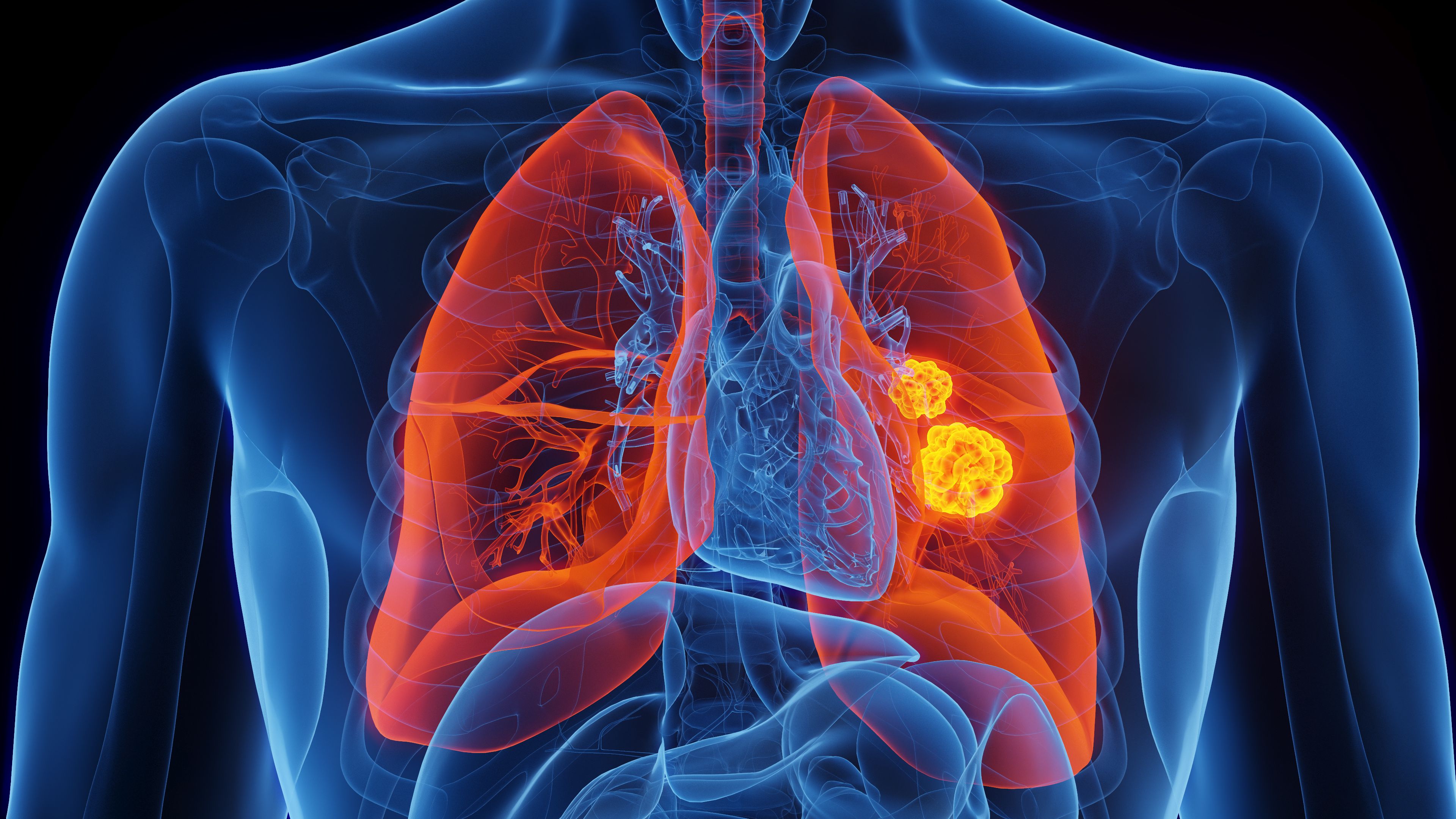- Center on Health Equity & Access
- Clinical
- Health Care Cost
- Health Care Delivery
- Insurance
- Policy
- Technology
- Value-Based Care
LAG-3 May Be Key SCLC Biomarker
LAG-3 expression appears to be significantly elevated in patients with small cell lung cancer (SCLC).
Lymphocyte activation gene 3 (LAG-3) may be an important biomarker in patients with small cell lung cancer (SCLC), according to a new study.
The findings, which were reported in the Federation of American Societies for Experimental Biology’s FASEB Journal, are important because they may help identify the subset of patients who would gain the greatest benefit from immune checkpoint inhibitor (ICI) therapy.1 The findings could also pave the way for new therapeutic options.
The therapeutic landscape for SCLC has been largely stagnant over the past 3 decades, the authors explained. The standard of care has long been platinum-based chemotherapy plus etoposide, they noted, “without considerable advances in therapeutic paradigms.”
The study suggests that LAG-3 is worthy of further investigation in small cell lung cancer. | Image credit: Sebastian Kaulitzki - stock.adobe.com

In recent years, ICIs have been used in this patient group, the authors noted, but they said the benefits are generally limited to a small subset of patients.
“This limited efficacy may result from the fact that SCLC tumors express minimal PD-L1, in spite of the high tumor mutation burden (TMB) in SCLC,” the authors noted.2
Those low levels of PD-L1 expression, combined with low major histocompatibility complex (MHC) expression, are likely behind the limited success of chemotherapy plus immunotherapy in this patient group, the authors wrote.1 They noted that trials of therapies targeting alternative checkpoint inhibitors, like PD-1 and CTLA-4, have likewise shown limited success. “Thus,” they said, “there is an urgent need to identify appropriate biomarkers for predicting the response to ICI, optimizing ICI utilization, and personalizing treatment for SCLC.”
The investigators used several high-throughput sequencing datasets to identify SCLC-specific differential gene expression among 28 immune checkpoint molecules. That process led them to zero in on LAG-3, which is also known as CD223. They then used immunohistochemistry to evaluate LAG-3 expression in SCLC, finding that it was expressed at higher rates in SCLC compared to other types of cancers, including lung adenocarcinoma, lung squamous cell carcinoma, and melanoma.
“Analysis of SCLC tumor and paired normal samples revealed the highest overexpression of LAG-3 in SCLC tumors among compiled checkpoint molecules,” they wrote.
Patients with higher levels of LAG-3 expression also had longer overall survival, a connection that was affirmed on multivariate analysis (HR, 0.49; 95% CI, 0.27-0.88; P = .018).
The authors also found that patients with higher LAG-3 expression had increased expression of MHC Class I (MHC-I), immune cell infiltration, and expression of certain immune checkpoints.
Those connections furthermore correlated with ICI benefit in SCLC datasets, indicating LAG-3 could be an important biomarker and also a therapeutic target.
“LAG-3 serves as a ligand for the MHC class II, inhibiting cellular proliferation and T-cell activation,” the investigators noted. “High-resolution structural insights into LAG-3 may prompt a new perspective for the development of LAG-3-targeting therapies.”
They noted that LAG-3 checkpoint inhibition is already the subject of at least 3 clinical trials. There is also reason to suspect that combination blockades might be effective in patients with high LAG-3 expression, the authors noted. However, they were unable to find clinical trials of anti–LAG-3 therapies used in combination with anti–PD-1 therapies in patients with SCLC. They said larger-scale trials of the combination are warranted in order to better understand the potential benefits for patients with SCLC.
For now, they concluded their study shows that LAG-3 is worthy of further investigation.
References
1. Sun L, Hu J, Wang J, et al. Expression and clinical implications of LAG-3 in small cell lung cancer. FASEB J. 2025;39(18):e71069. doi:10.1096/fj.202502183R
2. Carvajal-Hausdorf D, Altan M, Velcheti V, et al. Expression and clinical significance of PD-L1, B7-H3, B7-H4 and TILs in human small cell lung cancer (SCLC). J Immunother Cancer. 2019;7(1):65. doi:10.1186/s40425-019-0540-1
Insufficient Data, Disparities Plague Lung Cancer Risk Factor Documentation
September 24th 2023On this episode of Managed Care Cast, we speak with the senior author of a study published in the September 2023 issue of The American Journal of Managed Care® on the importance of adequate and effective lung cancer risk factor documentation to determine a patient's eligibility for screening.
Listen
